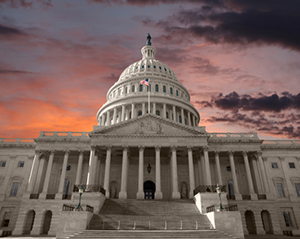 President Obama released his FY2017 budget request on Tuesday, totaling $4.1 trillion. This year’s budget is the President’s most expensive and expansive vision for federal spending yet. With the spending included in this effort, the President seeks to spur innovation, create more jobs, expand opportunity for all Americans, strengthen our national security and expand U.S. leadership abroad during his final year in office. NRPA’s Public Policy Team has looked into the major provisions of the President’s budget, which, if enacted by Congress, would be mostly positive for NRPA members and the communities we serve. The major highlights include:
President Obama released his FY2017 budget request on Tuesday, totaling $4.1 trillion. This year’s budget is the President’s most expensive and expansive vision for federal spending yet. With the spending included in this effort, the President seeks to spur innovation, create more jobs, expand opportunity for all Americans, strengthen our national security and expand U.S. leadership abroad during his final year in office. NRPA’s Public Policy Team has looked into the major provisions of the President’s budget, which, if enacted by Congress, would be mostly positive for NRPA members and the communities we serve. The major highlights include:
Existing Programs Facing Cuts or Major Changes
- A $167 million cut in the 21st Century Community Learning Centers from $1.13 billion to $1 billion. This program funds important out-of-school time initiatives including environmental education, STEM, literacy, violence prevention, drug awareness and youth development.
- A $200 million cut from the Community Development Block Grant (CDBG) from $3 billion to $2.8 billion. Many park and recreation agencies use CDBG funding to rehabilitate outdated facilities.
- A cut of $59.95 billion in chronic disease prevention at the Centers for Disease Control (CDC). This reduction was mainly driven by decreases to cancer research and community-based health efforts (REACH).
- A $21 million cut from the Racial and Ethnic Approaches to Community Health program (REACH) from $51 million to $30 million. REACH funds communities’ efforts to create culturally-appropriate chronic disease prevention programs.
- A $3 million cut, effectively eliminating the CDC’s “Healthy Community Design Initiative.”
Programs Holding Steady or Receiving Increases
- The Land and Water Conservation Fund (LWCF) would be “fully funded” at $900 million through a bifurcated approach where the first $475 million would come from the regular appropriations and the remaining $425 million would derive from new legislation permanently authorizing the LWCF and calling for guaranteed funding in future years. The initial $475 million is a small increased over 2016, with the State Assistance Program remaining level at $110 million.
- A $1 billion increase for Child Nutrition Programs (summer meals, after school meals, school breakfasts, and school lunches).
- $334 million for the Justice Department’s Juvenile Justice Programs (an increase of over $24 million).
- A $750 million increase (total of $1.25 billion) for the popular Transportation Investment Generating Economic Recovery (TIGER) grant program in support of multi-modal transportation projects included as part of a broad new “21st Century Clean Transportation Plan.”
New Programs or Spending
- $20 million to provide programming and transportation assistance for the “Every Kid in a Park” campaign under the National Parks Centennial Initiative.
- New funding to support “Climate Resilience” including: $2 billion in resources (over 10 years) for a new Coastal Climate Resilience program for at-risk coastal States, local governments and communities to prepare for and adapt to climate change, as well as $6 million to a “Resilience AmeriCorps” pilot program in support of roughly 175 AmeriCorps VISTA members trained to assist communities in planning for and addressing climate impacts.
- $1.8 billion to provide an emergency response to the Zika virus.
- $1.5 billion in permanently authorized funding for summer job opportunities, career information, and training opportunities for out-of-school and unemployed youth. This money would help NRPA members hire disengaged youth and transform communities struggling with unemployment.
 While presidential budgets are usually filled with pie-in-the-sky wish lists and pet projects that never see the light of day on Capitol Hill, it’s important for NRPA members to remember that presidential budgets also provide a roadmap for future Congressional actions. This is especially true for programs that are zeroed out or funded at lower levels than in previous years, as Congress often takes note what programs are cut from the President’s budget.
While presidential budgets are usually filled with pie-in-the-sky wish lists and pet projects that never see the light of day on Capitol Hill, it’s important for NRPA members to remember that presidential budgets also provide a roadmap for future Congressional actions. This is especially true for programs that are zeroed out or funded at lower levels than in previous years, as Congress often takes note what programs are cut from the President’s budget.
The release of the President’s budget traditionally marks the beginning of the budgeting and spending process in Congress. Over the next few weeks, your senators and representatives on Capitol Hill will be making important choices about how we fund our roads, schools and hospitals, the size and strength of our military, important scientific research into cancer, and a litany of other issues that will shape America’s future. NRPA will continue to make sure Congress understands the importance of our three pillars: conservation, health and wellness, and social equity.
Learn more about federal policy and legislative issues impacting parks and recreation.
NRPA Public Policy Team:
Kevin O'Hara, Vice President of Urban and Government Affairs
David Tyahla, Senior Government Affairs Manager
Oliver Spurgeon, Government Affairs Manager
Jayni Rasmussen, Advocacy and Outreach Specialist

